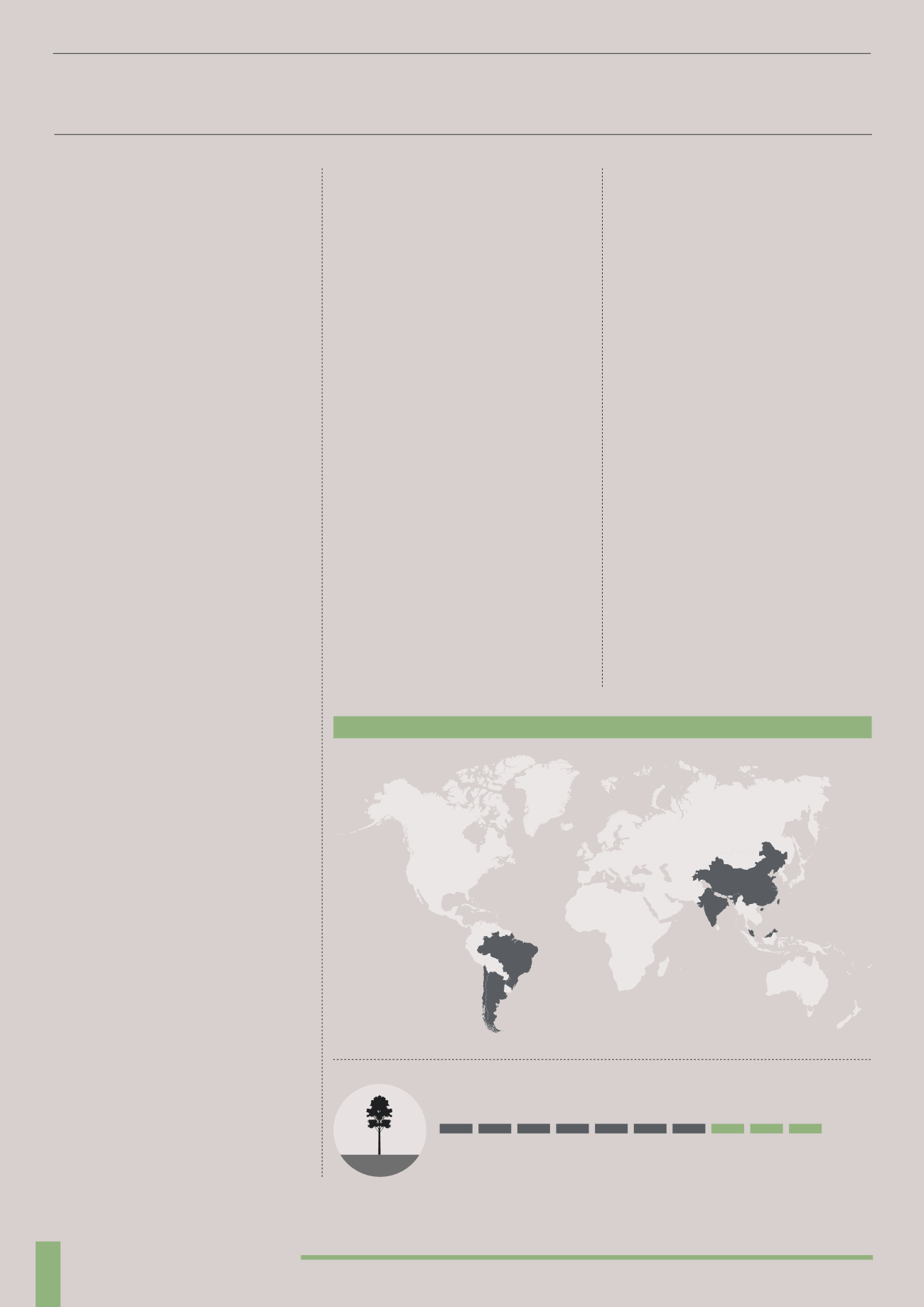
6
INVESTMENTCASE
THE ROLE WITHIN A
PORTFOLIO
Many wealthy families have traditionally held
land and forestry. Forestry makes sense as a
long-term investment. It’s a tangible store of
wealth, a commodity that is often in demand,
an asset that you can quite literally leave
to grow and it often attracts significant tax
benefits. Within the last 10 years there have
been a number of directly held investments
and collective investment schemes launched
in order to make this asset class more
accessible to ordinary retail investors.
DIVERSIFICATION
Forestry can provide diversification from
traditional financial products such as
equities and bonds. The timber market is
considered to be largely uncorrelated with
traditional financial markets, although in
times of austerity and recession there is
still likely to be an impact on demand for
physical resources such as timber.
INFLATION HEDGE
Physical assets are generally considered to
be a hedge against inflation, with forestry
being no different. Returns from forestry
have historically been closely correlated to
inflation. A study by Lutz in 2012 concluded
that a geographically diversified forestry
portfolio acts as an inflation hedge.
Forestry also adds a further benefit in that
trees are constantly growing, increasing
the quantity of timber available to be
harvested and pushing up their value.
SECURITY
Holding physical assets is usually
considered to be a secure investment,
despite sometimes being illiquid and
hard to value. Investing into freehold or
leasehold land as part of a well-managed
and established forestry plantation can
sound quite secure. However some of the
newer opportunities marketed to ordinary
retail investors are located in increasingly
exotic locations. Often where land is
cheap and laws around land ownership
are opaque or complex, this has lead to a
weakening of investor protections usually
found when investing in forestry.
This is not to say that all of the investments
in the sector are high risk. There are
some well-managed and established
collective investment schemes which offer
investors access to established forestry
assets in developed countries. This type of
investment can provide long-term security
and returns for an appropriate investor.
SPECULATION
A number of the opportunities available do
appear speculative, based upon forecasts
that timber prices will continue to increase
over the next 10-20 years due to demand
from emerging markets. The expectation
is that the timber when sold will produce
a very high return for investors. Some
providers are predicting timber prices
they expect to achieve in 20-25 years
time, it is impossible to predict accurately
what could happen over that sort of time
frame. Investors should view high returns
predicted over such a long period as highly
speculative rather than definitive.
THE MACRO CASE
Supporting the investment case and claims
made by the investment providers is the
demand. Which is being led by global
population growth and development in
emerging economies in Asia (India, China,
Malaysia) and South America (Argentina,
Chile, Brazil). China consumes over 150
million and India over 64 million cubic
meters of timber per year. A large amount
of this timber has to be imported which
has left a gap in the market for plantation
companies to fill. There is also the predicted
demand for wood-chips as a form of
renewable fuel, with the UN Food and
Agriculture Organisation (FAO) estimating
that demand will increase by 60% by 2030.
Meeting this demand will be made even
harder due to a number of constraints on
supply. Governments and international
Non-Governmental Organisations
(NGOs) are trying to prevent illegal and
unsustainable logging, which together
account for as much as 70% of all timber
sold. This makes a compelling investment
case for investors.
ASIA + SOUTH AMERICA DRIVING DEMAND FOR TIMBER
10% 20% 30% 40% 50% 60% 70% 80% 90% 100%
70%
OF SOLD TIMBER IS ILLEGAL OR FROM UNSUSTAINABLE LOGGING


